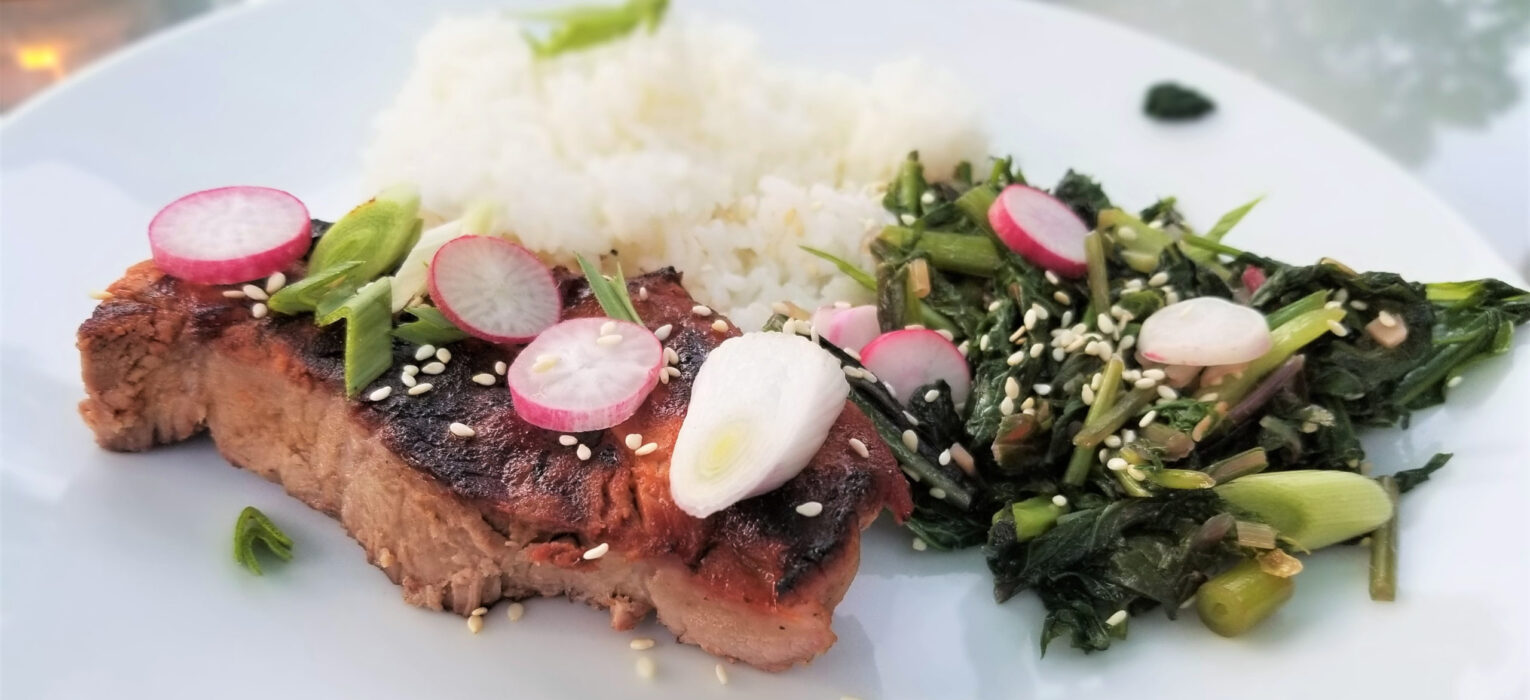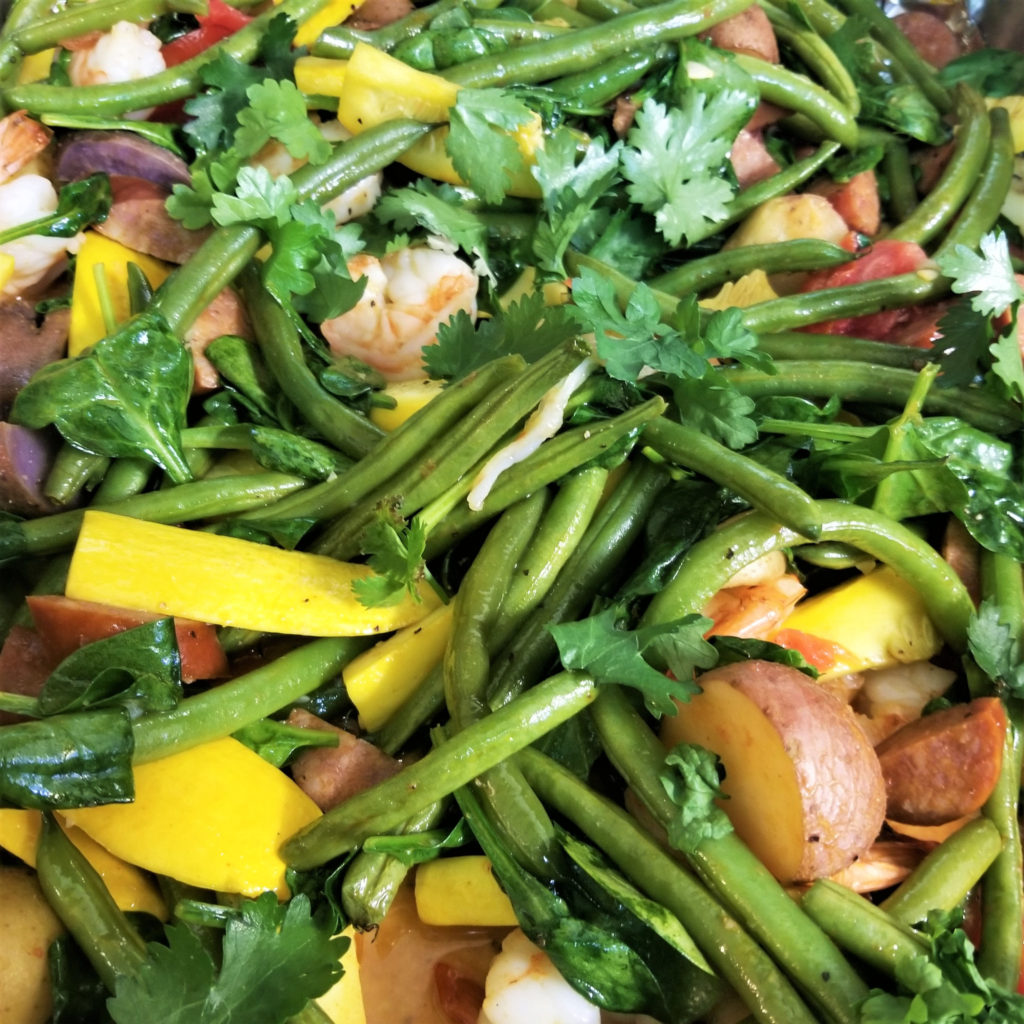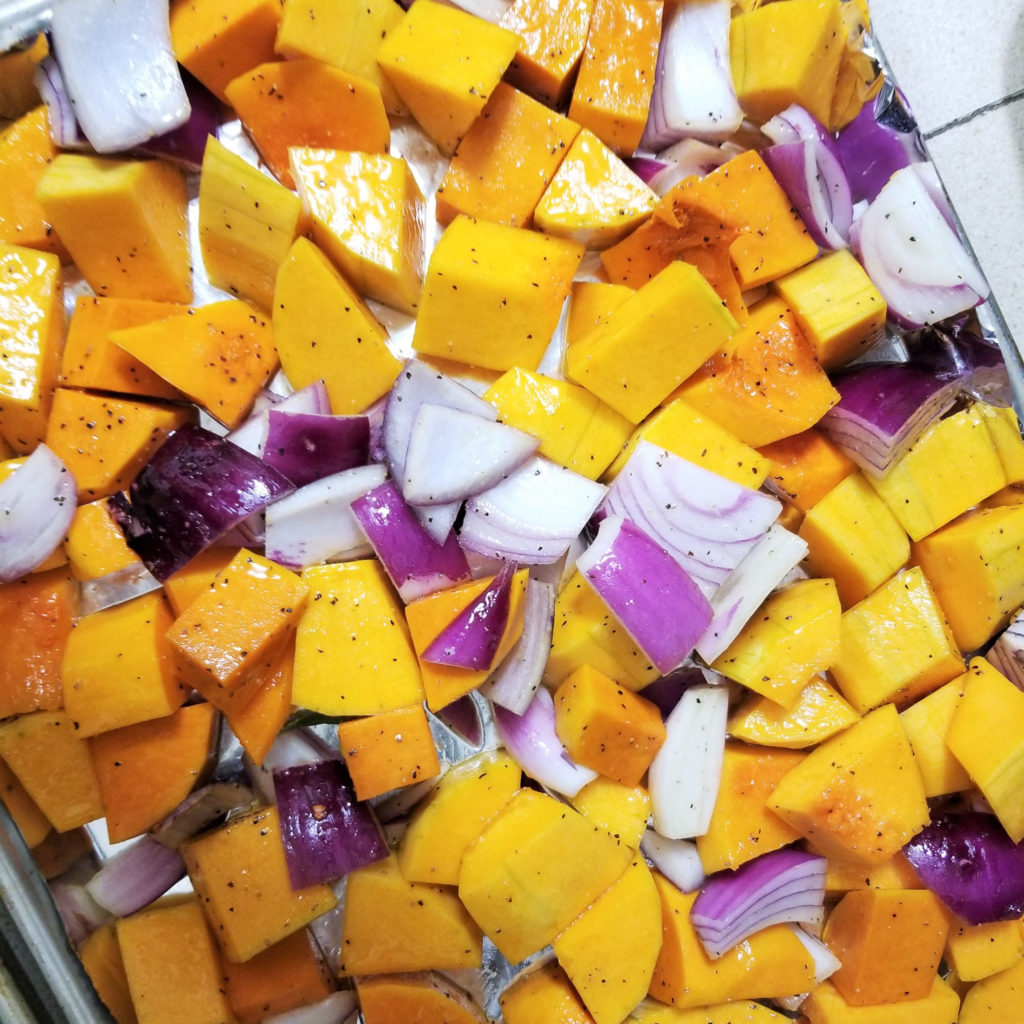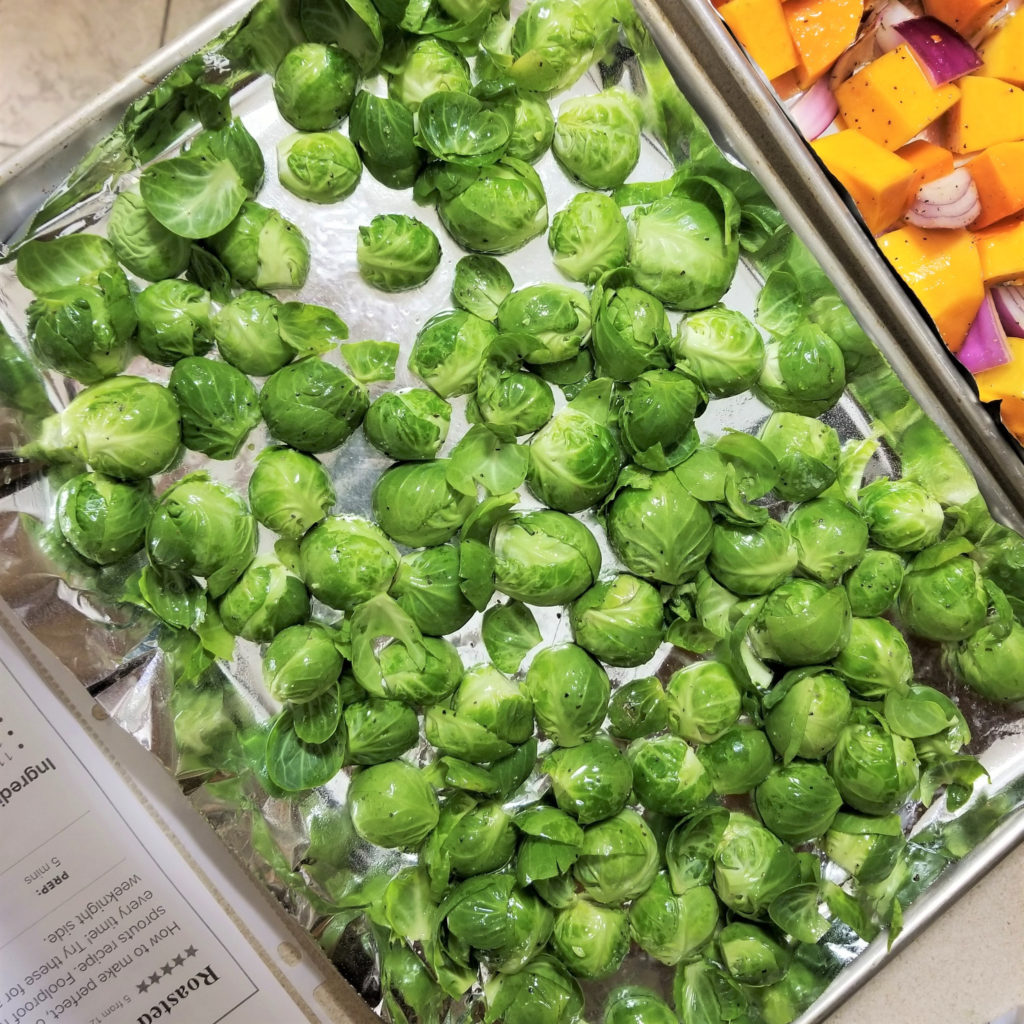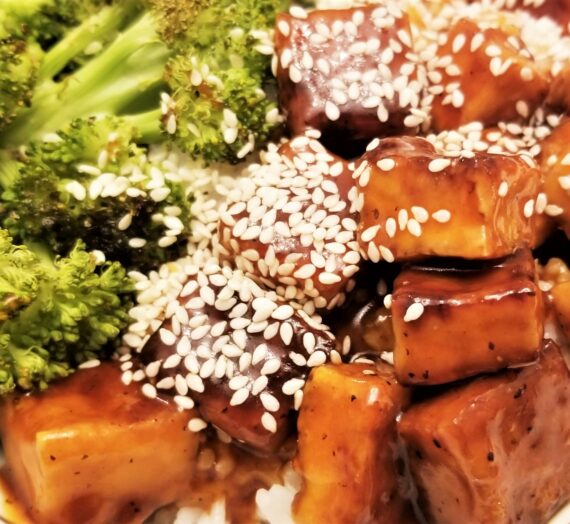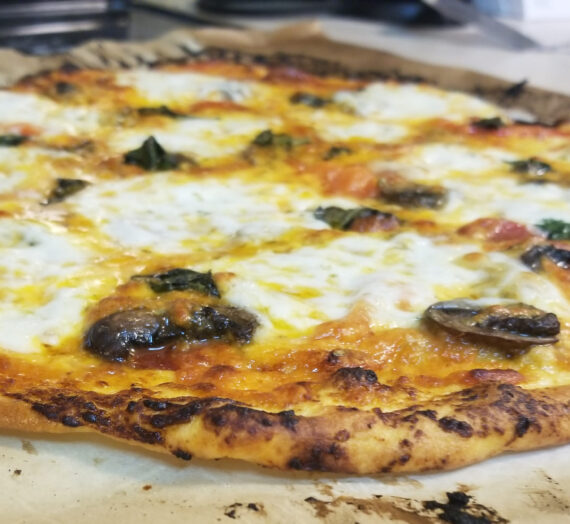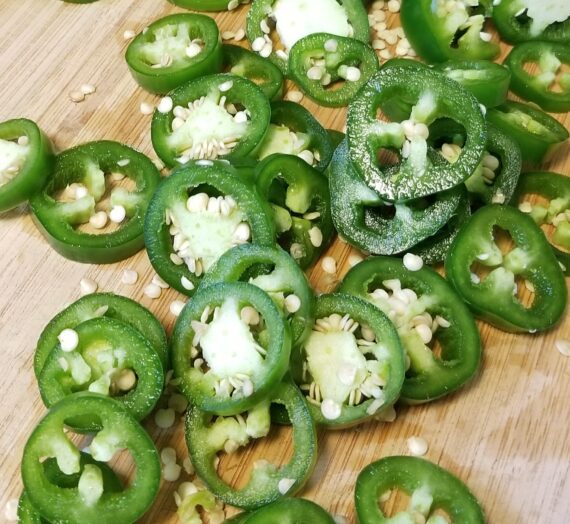a.k.a., The top 9 things Chez Thorburn learned from eating (mostly) at home in 2020
Once the now-really-mostly-online academic year resumed in August 2020, Chez Thorburn took a little hiatus from posting recipes in this forum. Eliminating “non-essential” screen time turned out to be very healthy and necessary for preserving sanity while mostly delivering and running online classes and music lessons. (Otherwise stated: Zoom fatigue is real.)
However, that doesn’t mean we weren’t cooking and baking up a storm–far from it! Our adventures are well-documented on Instagram (@cpthorburn : a private account, but you’re welcome to request to follow for near-daily food photos).
So, 4 months after going MIA, Chez Thorburn is back on the first day of 2021 with a little 2020 retrospective. Here are the top nine things we learned this past year while cooking at home during a pandemic!
1. How to make sourdough. Full stop.
Back in June, with all summer performances (and fall ones too) cancelled due to COVID, we were looking at a long stretch of being at home together, and possibly being very very bored. Enter the King Arthur Flour website and its guidelines for growing a sourdough starter over the course of several days (it took us closer to 10), just from flour(s) and water. This amazing new source of leavening became the basis of many sourdough experiments, which accelerated in quantity once we acquired better tools (bannetons and scoring lame) and a wicked good new cookbook by Bryan Ford that also invited us to learn (via making and eating) about diverse Latin American breads.
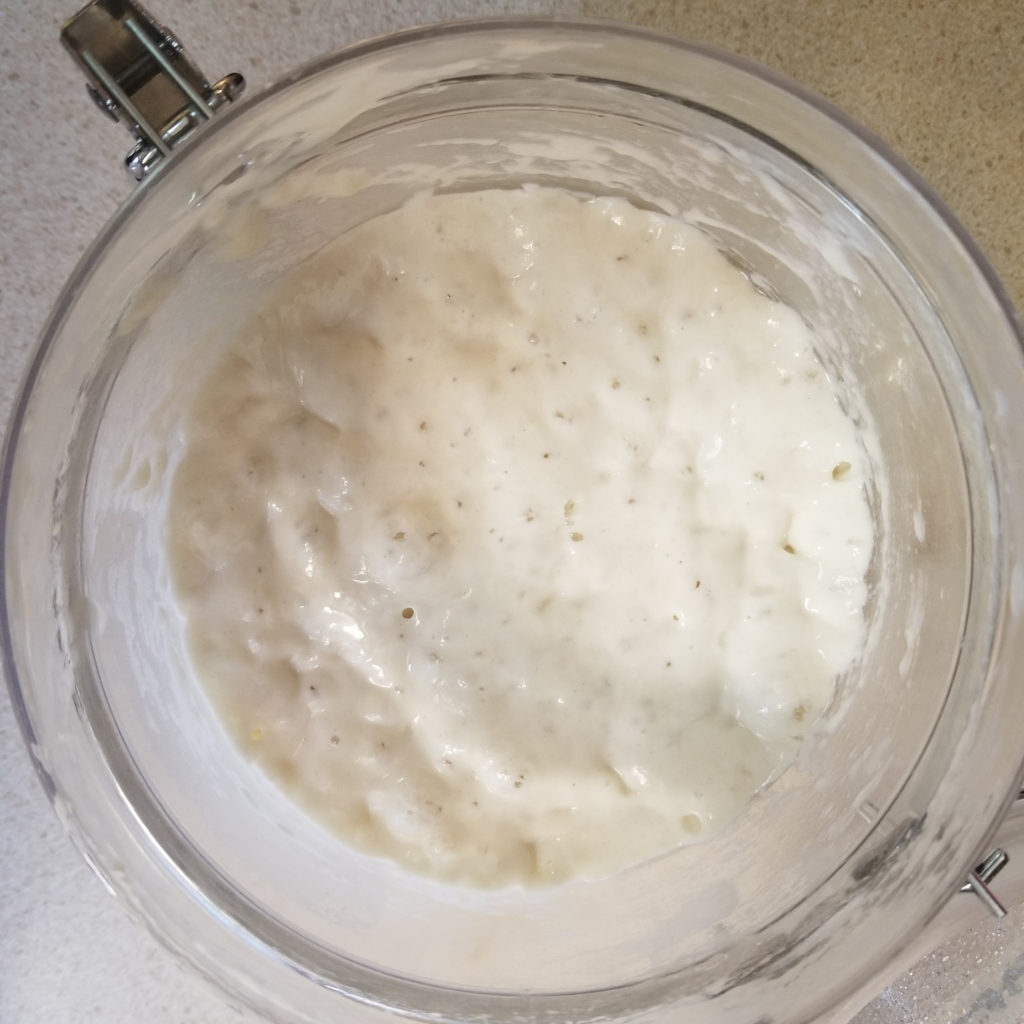
Active sourdough starter! 
Decorative scoring achieved. 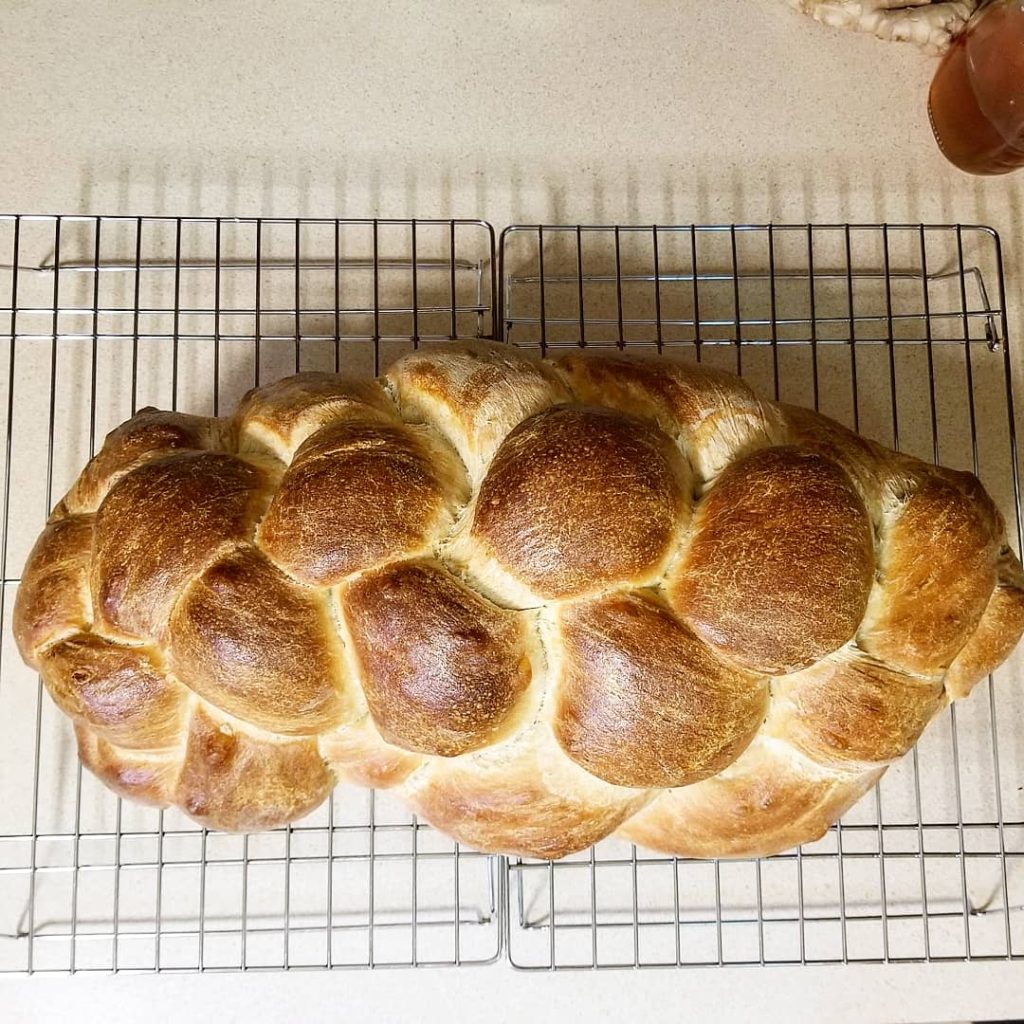
Sourdough Challah!
Now that we’ve mastered the basics of baking with sourdough, we are rarely looking back! So long for now, commercial yeast.
2. Sourdough discard makes other baked goods tastier.
We are on round 3 or 4 of sourdough discard at this point; it occasionally gets so voluminous that I throw it out (horrors!) and start again. Over the summer, we were much better about using the discard in pancakes, waffles, biscuits, and the occasional pie dough. A good rule of thumb I’ve been following when adding discard to a recipe is to add c. 100g of the discard to a recipe in place of 50g of flour and 50g of liquid, or to preserve that ratio if scaling up.

A few lucky folks also received sourdough starter from our discard. Hit me up if you’re in the Petersburg-Richmond area and would like some starter!
3. Locally-produced meats, veggies, fruits, and cheese are a million times tastier than their supermarket equivalents.
Since grocery shopping went curbside/pick-up/delivery thanks to the pandemic, we decided mid-2020 was a good time to invest in weekly orders from Fall Line Farms and Local Roots in the Richmond area. So, from late April onward, we have been buying in-season produce, and the occasional meat or cheese, from FLFLR weekly, which has allowed us to downsize the amount of these items we buy from Walmart pick-up (and the occasional Wegmans pick-up/pilgrimage/splurge).

The joys and travails of eating seasonal also became apparent: We received SO MANY amazing tomatoes, eggplants, and peppers over the summer that I actually had to solicit ideas for dealing with *yet another* eggplant. We resorted to pickling shishito peppers because we got so many of them; and we sampled occasional on-sale “oddities” like goat loin chops, pork neck bones, and beef liver. All of them were amazing. We are also finding that, now that we are deep into winter produce (sweet potatoes, beets, collards, kale, some apples still), we have no desire to buy out-of-season tomatoes or zucchini from the grocery store. We ate our fill of these (and berries!) over the summer, and now we are quite happily eating what winter has to offer. And in the meantime there is always fresh goat cheese!
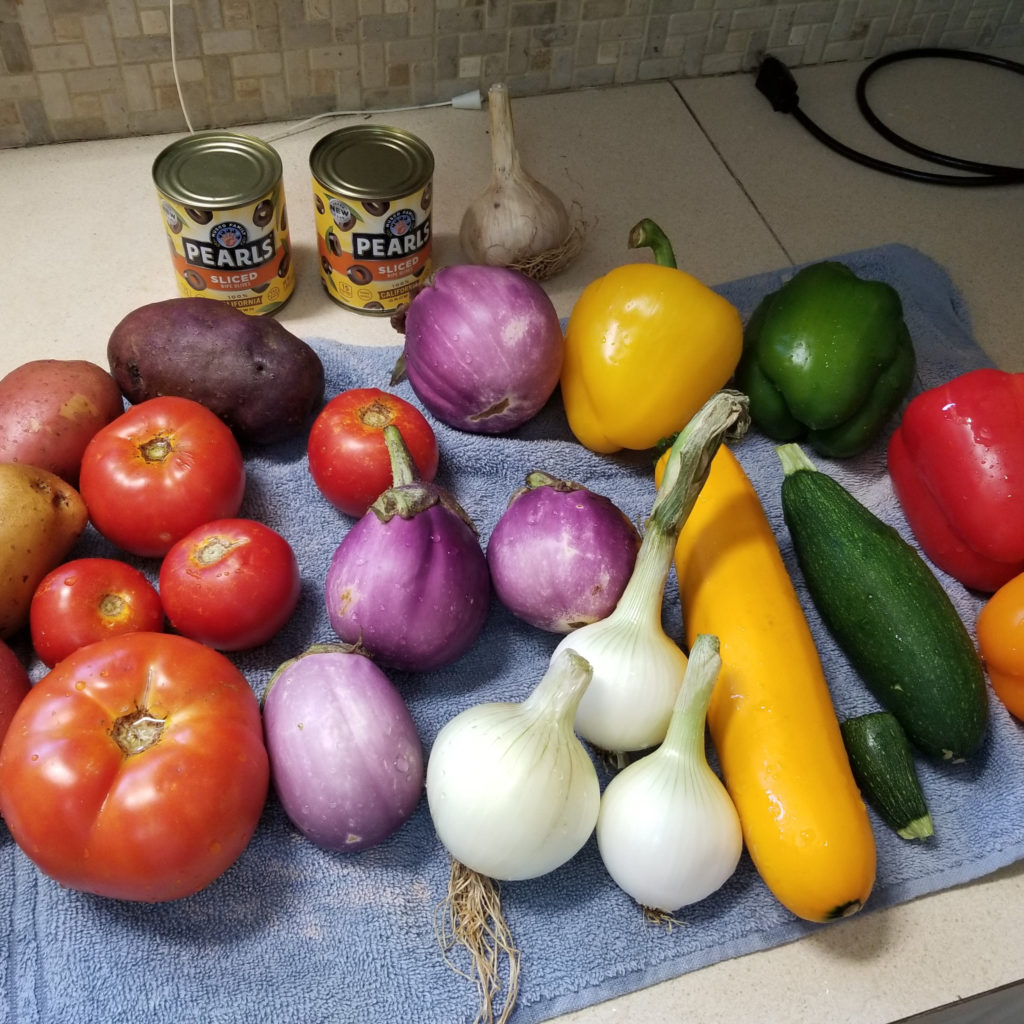
4. How to process (and eat) a week’s worth of “mystery veggies.”
During weeks I didn’t feel like meal-prepping before ordering local produce, I’d order a “best of the farm” box from a local farm via FLFLR, then upon receiving it, make a plan for what to do with its contents. A few trends emerged in how we’ve dealt with these so-called “mystery veggies”:
- Roasting: Sweet potatoes, turnips, large radishes, beets, eggplants, zucchini, acorn/delicata/butternut etc. squashes…
- Grilling: Same guidelines, except for summer vegetables. New fruits and vegetables we grilled this summer include spring onions and scallions (SO GOOD) and peaches!
- Braising/pan-roasting: Chard, collards, sometimes kale, baby or Hakurei turnips.
- Rinsing, chopping, and/or eating raw: Mostly kale (as a salad base), really good tomatoes (also a quick pan-sautée with Herbes de Provence for tomatoes = A+ breakfast side to eggs).
- Pickling: Anything we couldn’t use quickly enough, including radishes, peppers of all kinds, cucumbers, and sometimes eggs.
Roasted turnips and radishes are now some of my favorite go-to sides for when we have them on hand. SO tasty.
5. Grits are actually as good as Southerners claim.
We did not grow up in the American South, but after 8 years of living in various parts of Virginia, we have finally embraced all that grits have to offer, as long as they are chock-full of cheese. Grits beneath beef short ribs? Yes, please. Shrimp and grits? OMG. Grits under greens? Sure! Grits for breakfast? Not quite there yet, but maybe 2021 will convince us.
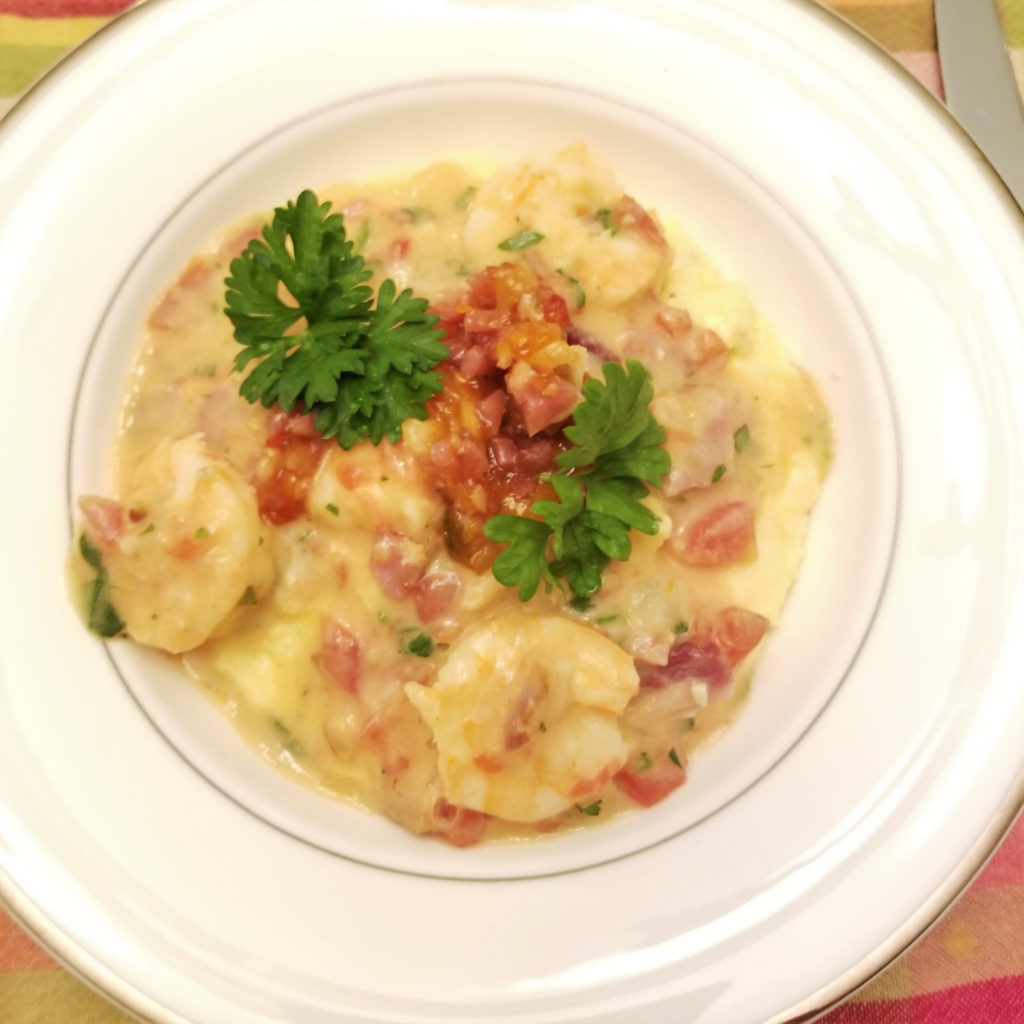
Shrimp & grits 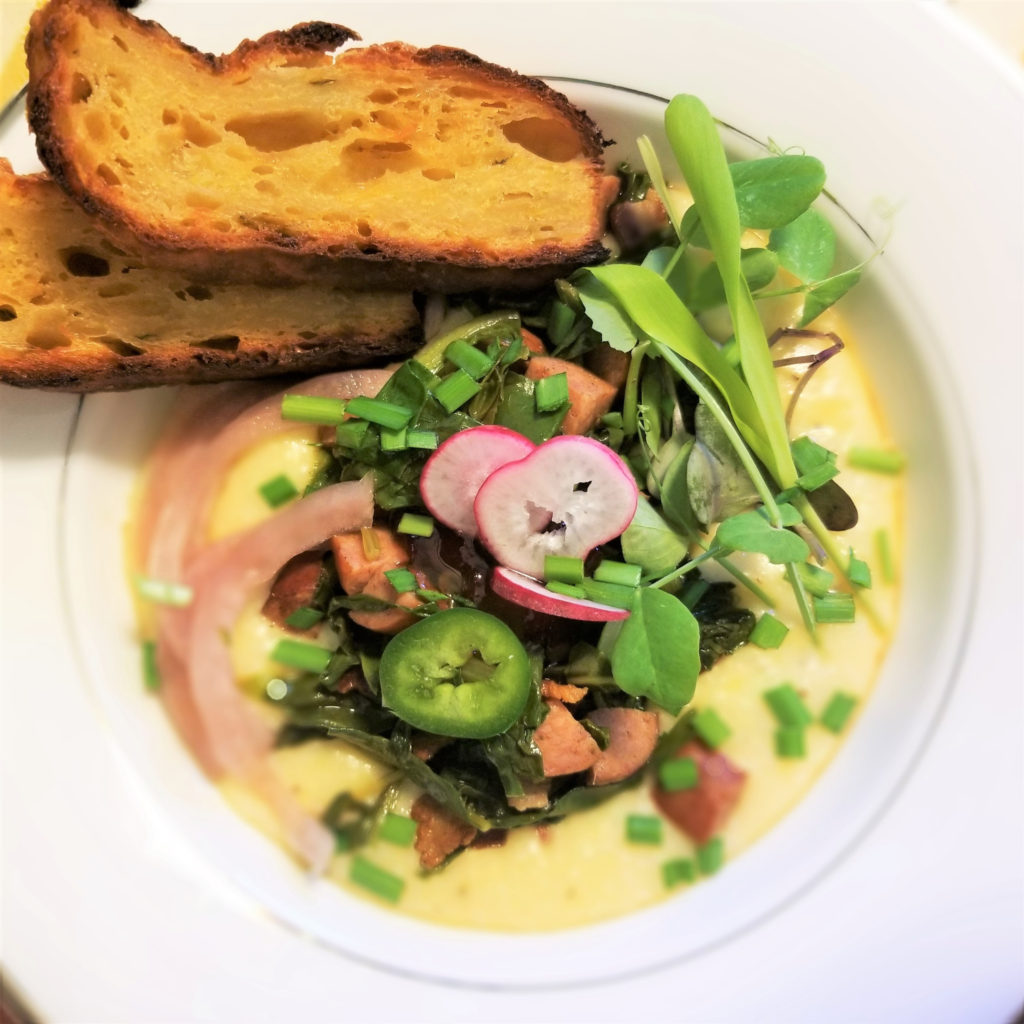
Greens over grits 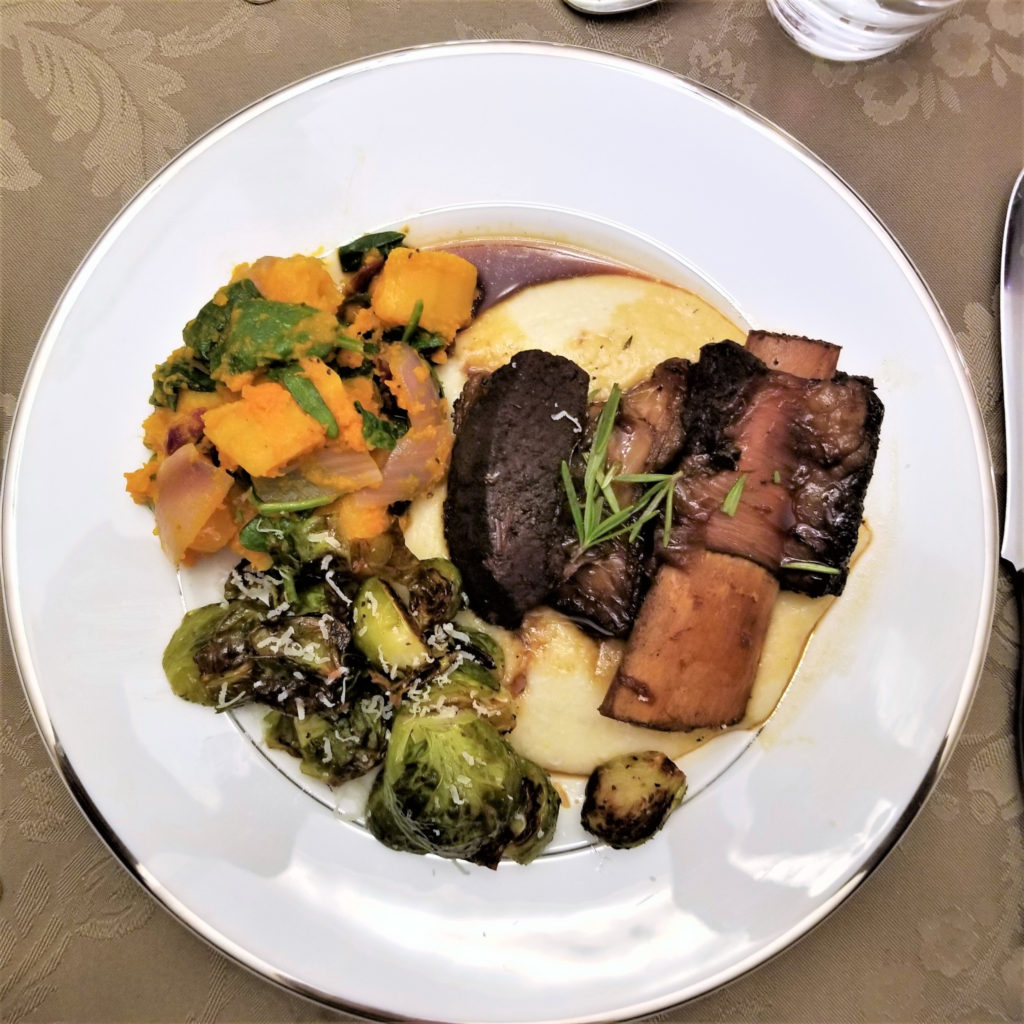
Beef ribs & grits (also our Christmas 2020 dinner!)
6. How to butcher a whole chicken!
Besides TP shortages, another early pandemic scarcity was chicken. Specifically, sometimes stores near us were just clean out of chicken breasts, thighs, or legs.
So, we began ordering a whole chicken c. once weekly, since apparently there were still plenty of those. We either roasted the chicken whole for dinner or, with the aid of helpful YouTube videos, butchered it ourselves before freezing its constituent parts for later use. No matter whether we roasted or butchered-then-froze, we always kept the carcass (in its own specially-labeled bag) and either froze it too, or immediately put it in the crock pot overnight with other savory herbs and veggies to become chicken stock.
Spending $5-7 for a whole chicken weekly has got to be the most economical–and delicious–way to get the most chicken meat possible, while also providing the basis for a never-ending supply of the best chicken stock ever!
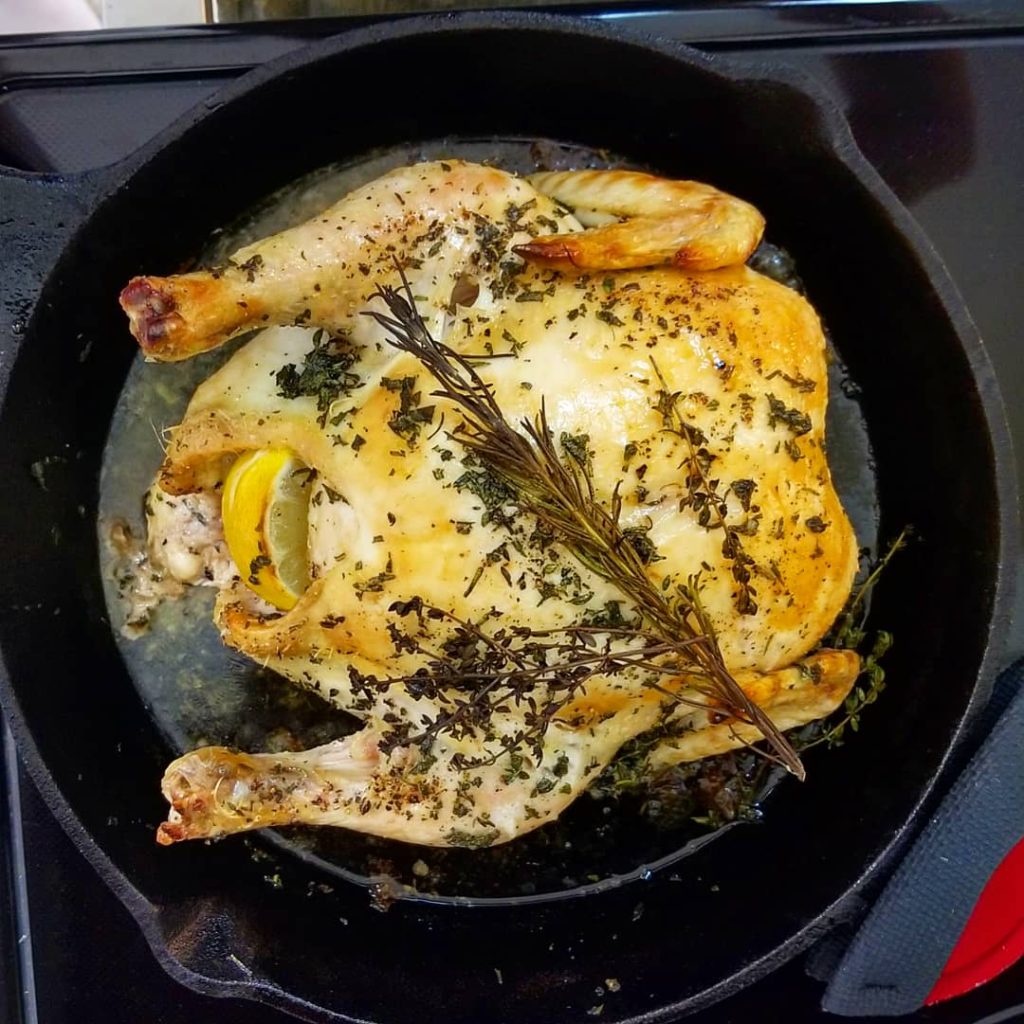
7. We went down the holiday fruitcake hole and emerged victorious.
I’d wanted to make fruitcake for a few years, but had previously never made the time during the holiday teaching-and-gigging season to bake ahead and attend to dutifully preserving it in alcohol for weeks.
But, with only a fraction of the usual holiday gigs, 2020 seemed like a good year to take the fruitcake dive. In early December, we made two kinds: Fruitcake with brandy and rum and dried fruits and nuts (no candied fruit); and Scotch fruitcake with raisins…and Scotch…from the 1943 edition of The Joy of Cooking. After a few weeks of being wrapped in swaddling cloths (err, alcohol-soaked cheesecloth in the fridge), the fruitcakes made fantastic holiday gifts for colleagues and friends.
We kept one of each kind for ourselves and “marzipanned” the brandy/rum fruitcake for our Christmas Eve dessert. It was out-of-this-world amazing. (I believe my husband pronounced it to taste like “concentrated Christmas.”)

Fruitcakes with brandy, rum, dried fruits, and nuts. 
The marzipanning of the fruitcake!
8. We perfected our thin-crust New Haven-style pizza game.
As an “early pandemic” activity, we made pizza c. 1x weekly, mainly to creatively use up leftovers, but also to continue tweaking our crust recipe. Having spent our formative young adult years devouring the best “apizza” ever in New Haven, we are continually trying to find ways to bring the spirit of Pepe’s and Sally’s into our kitchen.

Short of building an actual brick oven in our backyard (which might be a good activity for the 2021 portion of the pandemic), I think we finally hit on a winning recipe with Abate’s crust recipe…although we’ve since found a sourdough pizza crust that also comes pretty close.
Essentially, make sure you roll the dough *very* thin, and bake it at 500 F on a pizza stone (which is the hottest our oven and stone can go) until the cheese and toppings caramelize and char a little bit. Burnt is authentic. Burnt is good.
9. Anything can be pickled.
Jalapeños, daikon radishes, shishito peppers, eggs, cucumbers: the possibilities are limitless. Pickling became our go-to for excess vegs from FLFLR, and until recently we were still eating pickled shishitos from this summer from a jar in our fridge. I think we still have some wonderful bread-and-butter pickles in there, too, which we really should eat (as they only keep a few weeks to a month, and we pickled them in…July…).
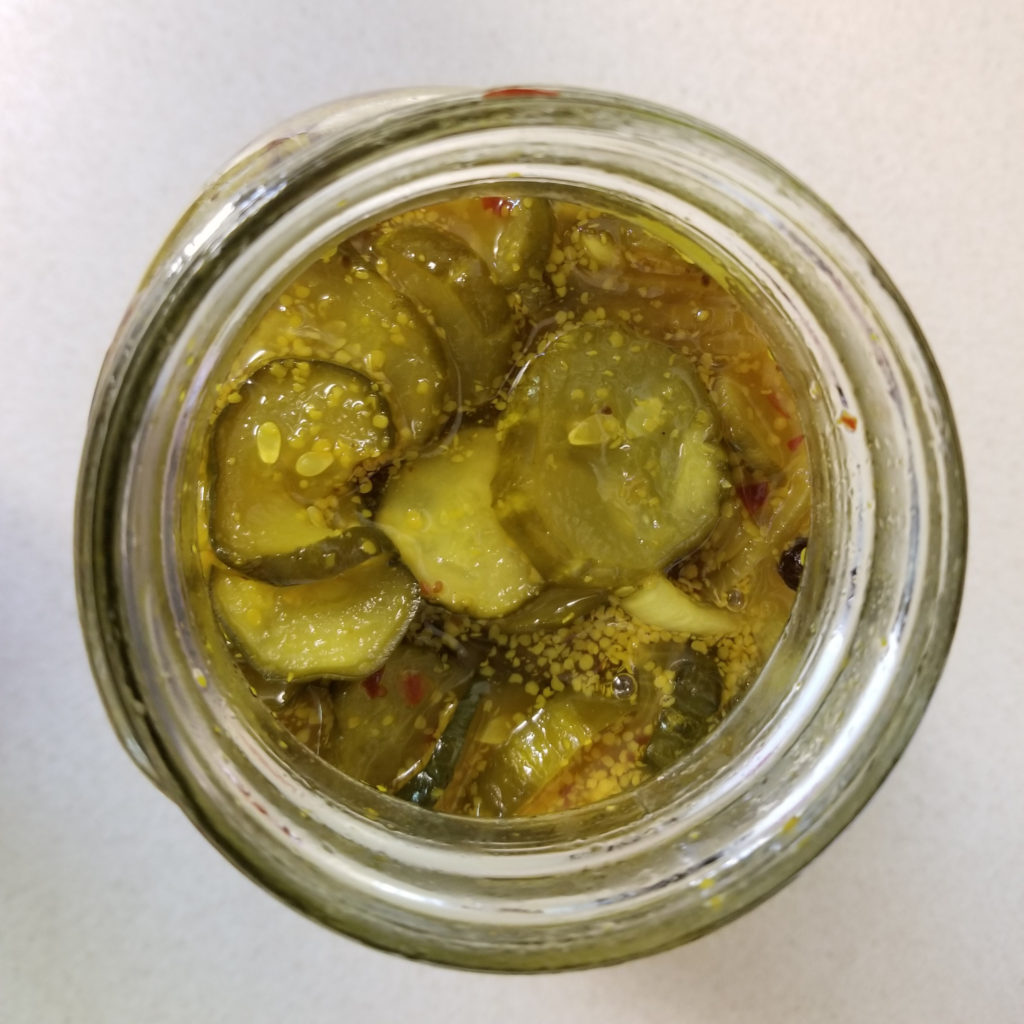
Bread and butter pickles 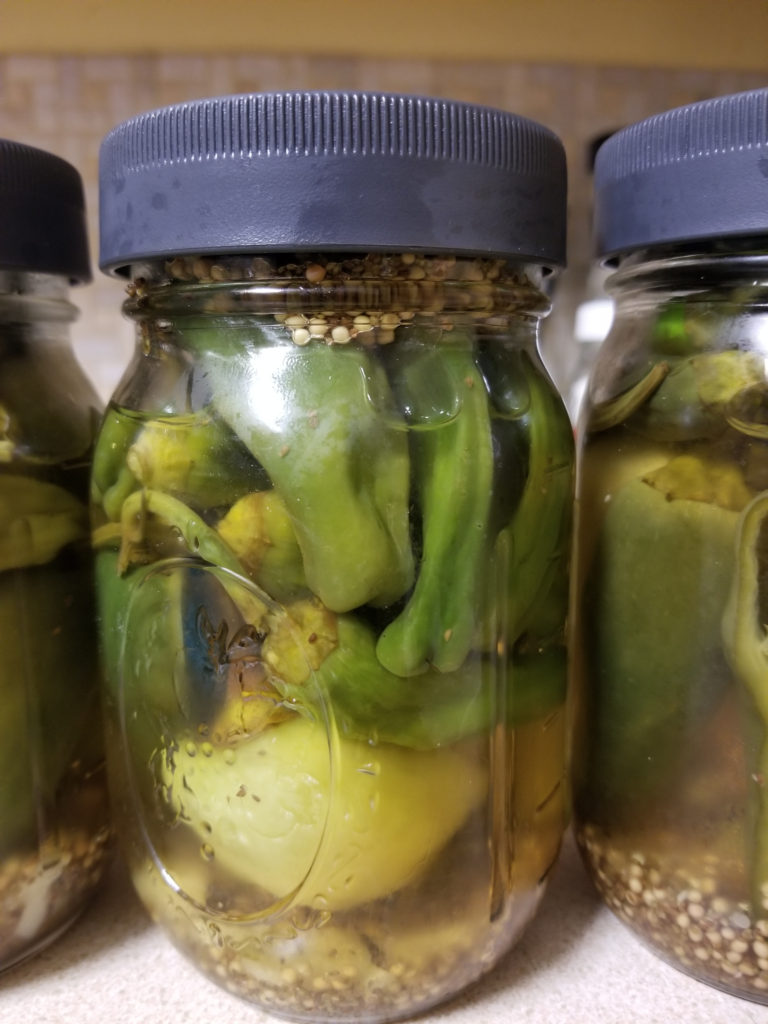
Pickled shishitos
And bonus #10: Food is better shared with others!
Even while isolated at home during a global pandemic, we looked for ways to share meals with others by preparing meals for friends/family in need, gifting breads or baked goods, and generally trying to find ways not to have to eat (by ourselves) *everything.*
Here’s to more new culinary adventures – and sharing them together – in 2021!
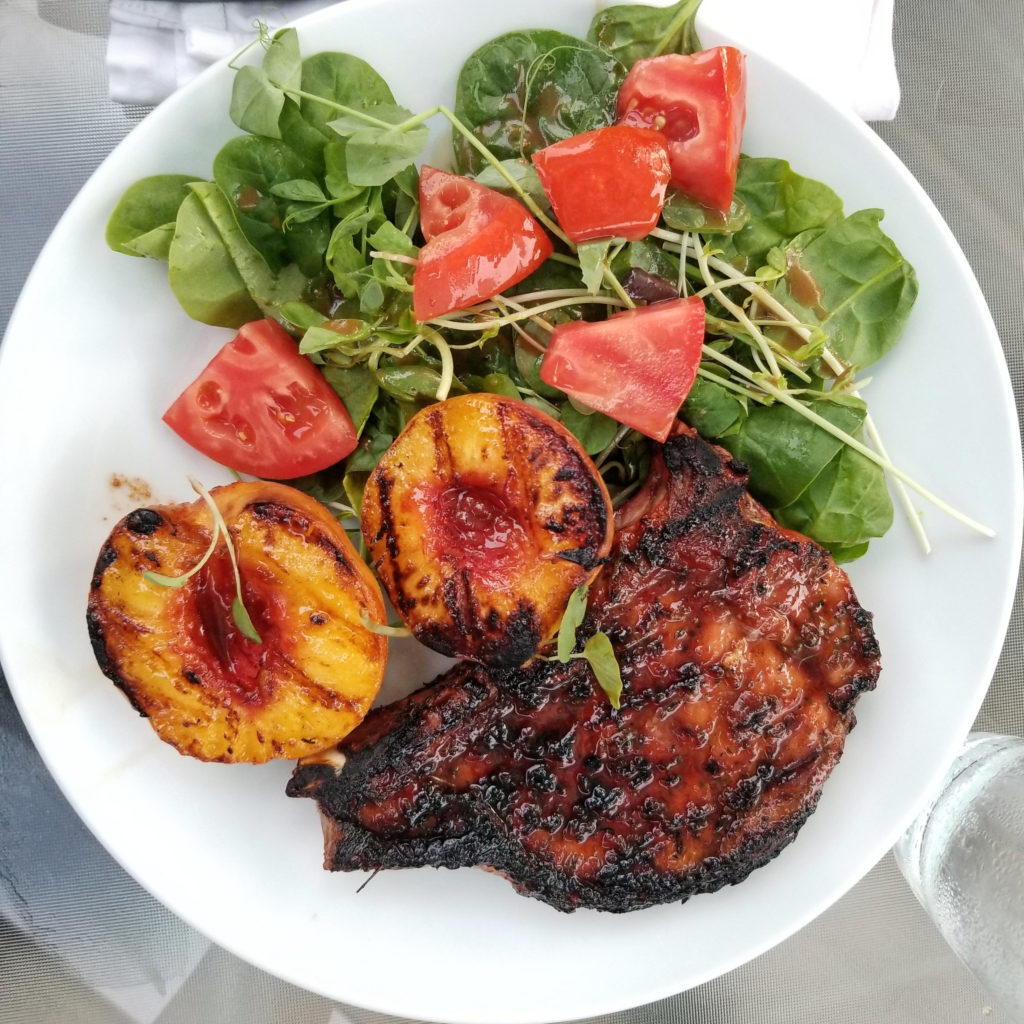
Grilled pork chops and peaches 
Bastille day fruit tart 
Korean beef ribs
